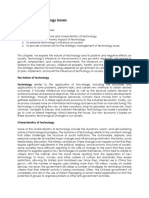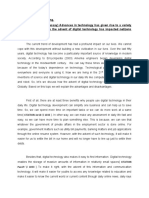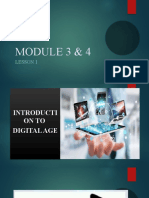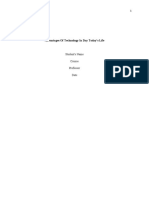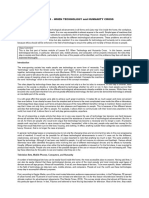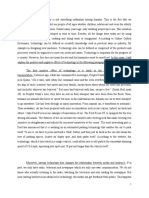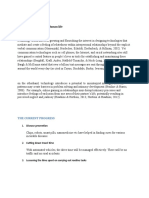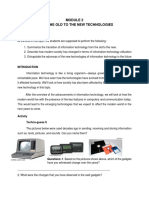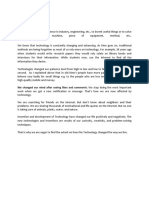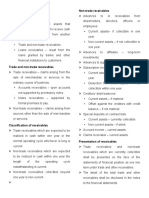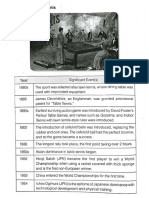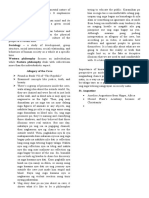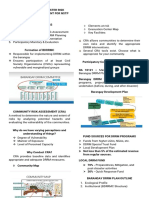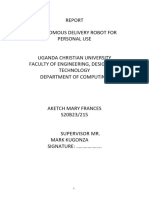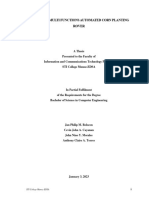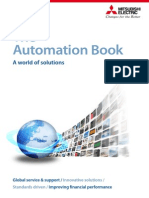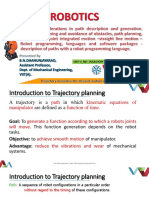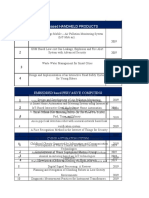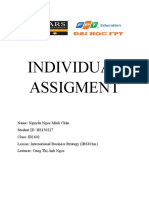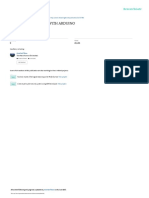0% found this document useful (0 votes)
106 views13 pagesTCW - Chapter 12
1. The document discusses the advancement of technology and its effects on society. It outlines how technology has improved lives through increased access to communication, information, transportation, education, and entertainment, but has also weakened family relationships and reduced social interaction.
2. It predicts that technology will continue to evolve rapidly to meet new needs and make work more efficient. However, overdependence on technology may diminish critical thinking skills and promote laziness.
3. The rise of social media and constant connectivity through mobile internet has transformed how people interact and represent themselves online, but has also increased privacy risks and the spread of misinformation. Effective use of technology requires awareness of both benefits and disadvantages.
Uploaded by
Yna SarrondoCopyright
© © All Rights Reserved
We take content rights seriously. If you suspect this is your content, claim it here.
Available Formats
Download as DOCX, PDF, TXT or read online on Scribd
0% found this document useful (0 votes)
106 views13 pagesTCW - Chapter 12
1. The document discusses the advancement of technology and its effects on society. It outlines how technology has improved lives through increased access to communication, information, transportation, education, and entertainment, but has also weakened family relationships and reduced social interaction.
2. It predicts that technology will continue to evolve rapidly to meet new needs and make work more efficient. However, overdependence on technology may diminish critical thinking skills and promote laziness.
3. The rise of social media and constant connectivity through mobile internet has transformed how people interact and represent themselves online, but has also increased privacy risks and the spread of misinformation. Effective use of technology requires awareness of both benefits and disadvantages.
Uploaded by
Yna SarrondoCopyright
© © All Rights Reserved
We take content rights seriously. If you suspect this is your content, claim it here.
Available Formats
Download as DOCX, PDF, TXT or read online on Scribd
/ 13

